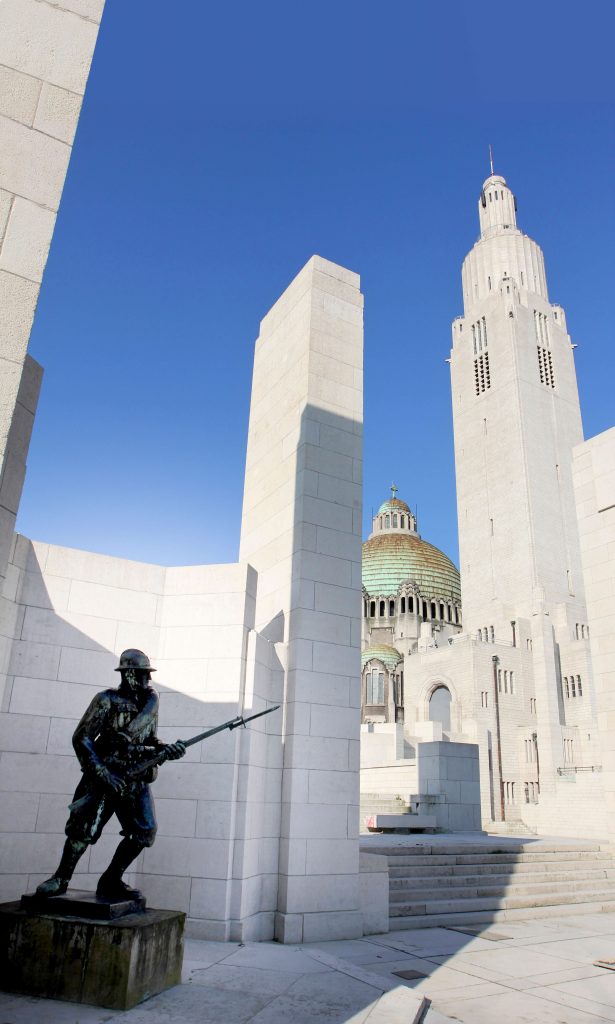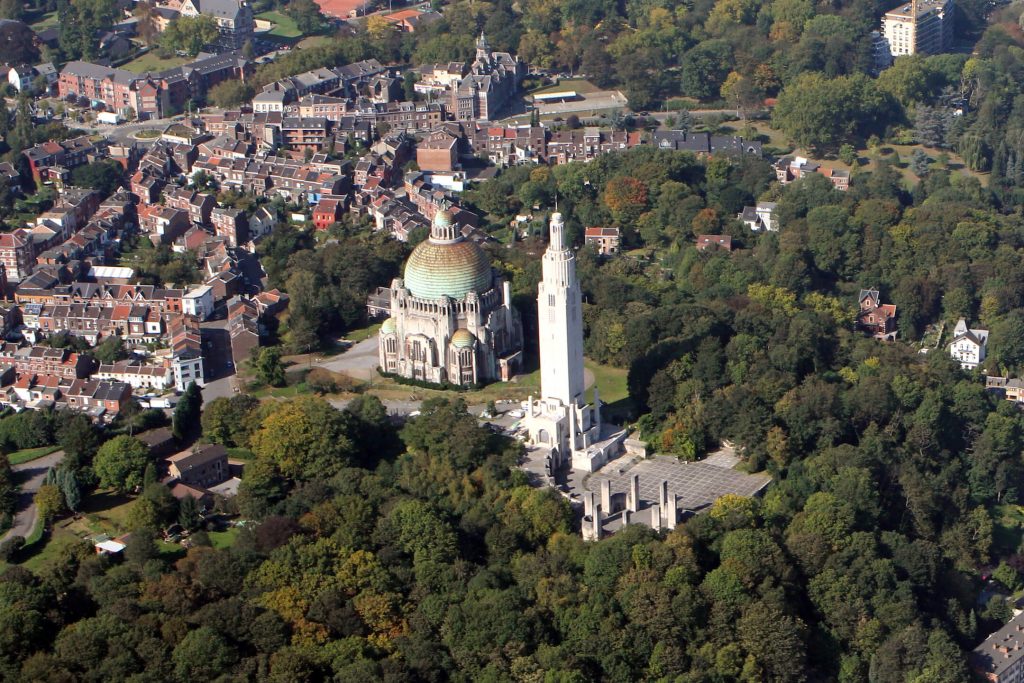
The Allied Memorial of Cointe, which overlooks the city of Liège, pays tribute to the Belgian resistance. And more particularly that of the people of Liège in the Fortified Position during the First World War. It was the first city to oppose the invaders in 1914 and reveal to the world the deadly force of the new German weapons. Therefore, the International Foundation of the Veterans of 1914-18 chose Liège as the location for a memorial of the Allied countries in 1925.
Construction started in 1928 according to the plans of the Antwerp architect Joseph Smolderen and ended unfinished in 1935. The religious building was blessed and dedicated to the Sacred Heart in 1936. The civil monument was inaugurated on July 20, 1937, in the presence of King Leopold III.
During the Second World War, bombings hit the site hard. As a result, it became the property of the Belgian State in 1949. Restoration work was completed in 1968. On November 20 of that year, King Baudouin I proceeded with a new inauguration.
The Allied Memorial of Cointe consists of a religious building, the Church of the Sacred Heart, often called “basilica.” The memorial also houses a civil structure, the tower of The Allied Memorial. In and around the civil memorial are several monuments that the Allied nations have offered to Liège. It is a unique memorial in Belgium because it is the only one to combine civil and religious aspects in the same place of memory. It houses works and monuments donated by several countries (France, Spain, Romania, Italy, Greece, Poland, Russia and the United Kingdom).
However, it represents a collective and simultaneous tribute of all the Allies of the First World War for the first time in history.
Interestingly, the presence of Spain is not explained by its active participation in the fighting (the country remained neutral), but by its help during the supply operations. It is the first monument in history to have been given to one country by several others, in recognition of the bravery of the soldiers of Liege during the German offensive.

The monument can be visited by groups only on request, most of the year. However, it is open to all during the weekend of Pentecost, the national holiday, and the Heritage Days. On these occasions, it is possible to see the interior of the memorial to admire the various sculptures that testify to the gratitude of each country. Don’t miss climbing to the top to enjoy a breathtaking view.